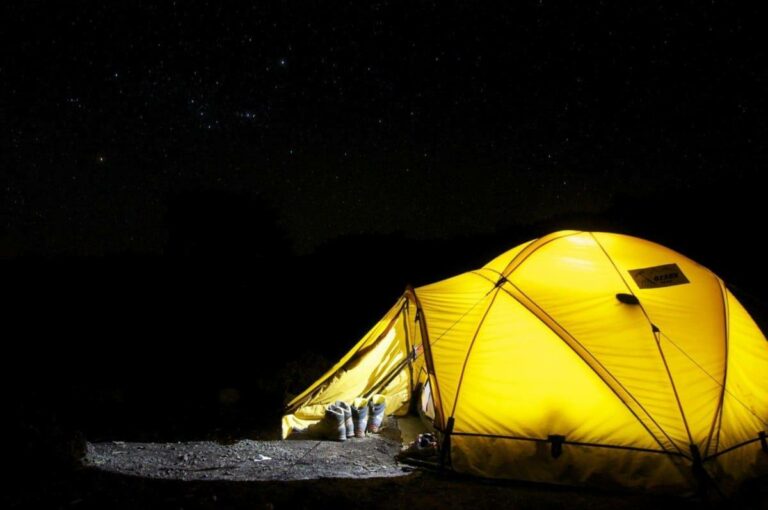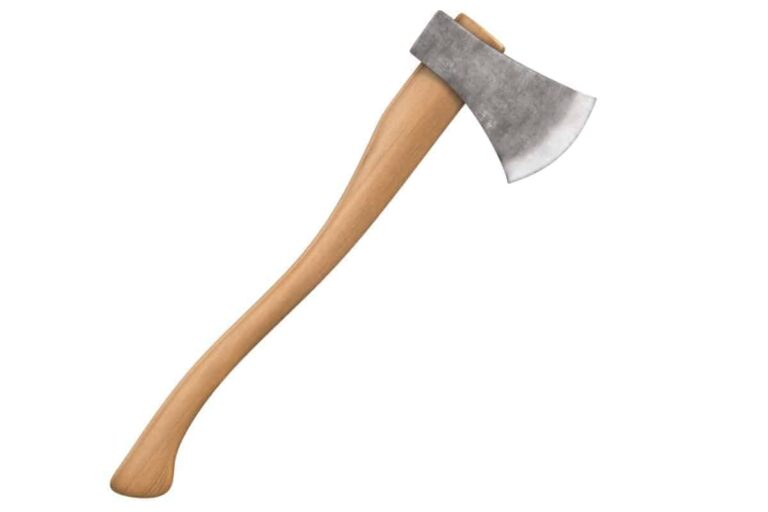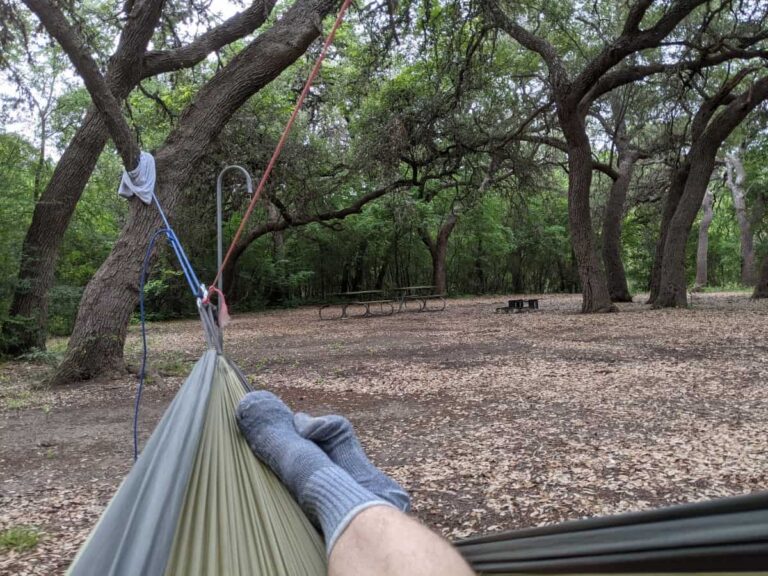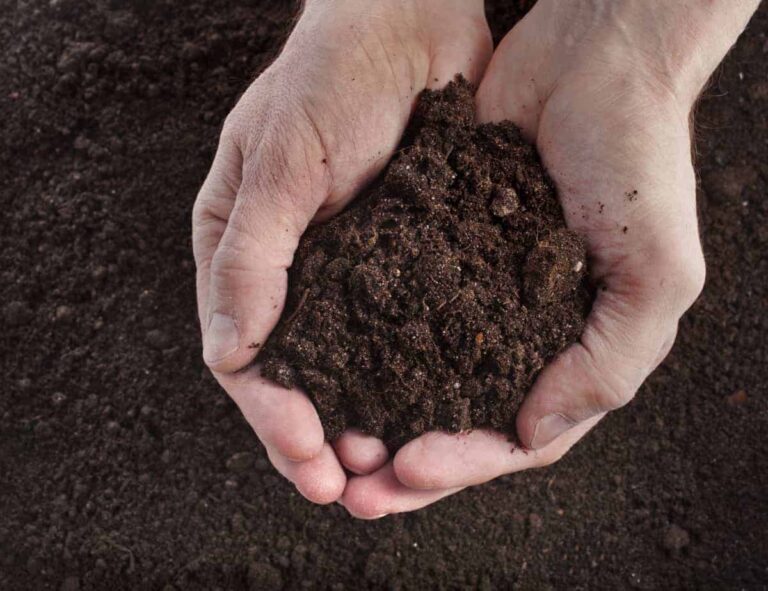12 Ways To Make Winter Camping Fun With And Without Snow
Winter camping is about more than just surviving under more difficult conditions. These winter camping activities can make the effort of winter camping even more worthwhile. Check them out!
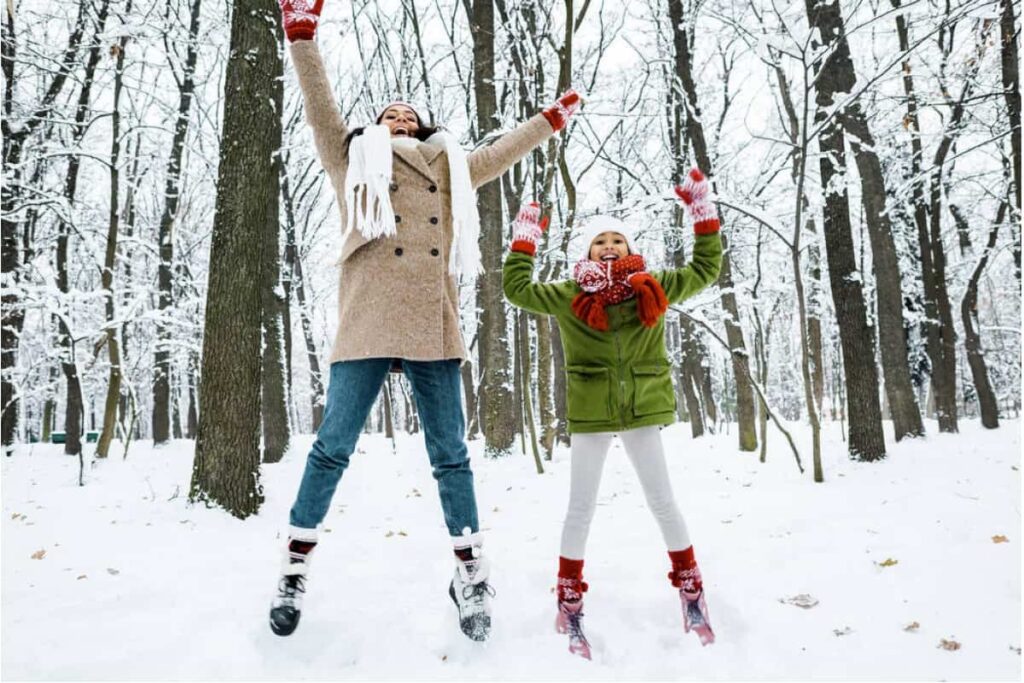
You can make winter camping fun with these activities:
- Building shelters or other structures out of snow
- Tracking animals that are active in winter
- Sledding with genuine sleds or tubes
Camping in winter – it seems like a lot of work, doesn’t it? You have to pack a ton of extra clothing to make sure you stay dry and warm, put extra effort into preparing food, and even avoid going out to use the restroom at night. Is it really even worth it?
Winter isn’t the same everywhere you go. In some areas, it may be milder while in others you may end up surrounded by snow and ice. So how do you know if what you’re doing is actually winter camping? We’ll cover that question for you in our article on the matter. Take a look at it here.
There’s no denying that camping in winter does take more effort than camping in warmer seasons, but it does also provide unique activities that can be a lot of fun. If you’re wondering whether or not winter camping is even worth the effort, take a look at our list of ways to make winter camping fun. You may discover that even the extra effort you have to put into survival can be a good time.
12 Ways To Make Winter Camping Fun
Winter camping can be a lot of work. That said, there are still people who love it. Many like the challenge of roughing it when the weather isn’t willing to be perfect 60 degree weather. Others find thrill in the sports or activities that are unique to camping in winter.
There are plenty of ways to have fun when you’re camping in winter. If you’re willing to put the work in, there’s a lot of joy to be had as well. Below, check out 12 ways you can have fun when you’re camping in winter.
Dress For Success
Before you start having any fun around your winter camping space, it’s important to make sure you’ll have everything you need to be comfortable. Whether there is snow on the ground or not, winter camping is cold, or at least colder. Consequently, making sure you’re prepared is super important.
You can also have a good time picking out the right clothing and gear for your winter camping trip. Take your time to select clothing that will keep you warm while still allowing you to move around without too much trouble.
Choosing a Base Layer
Many people like using wool or synthetics as their winter camping base layer. These materials are great for not only keeping you warm but also for keeping your skin nice and dry. It’s still possible to get sweaty, even if you’re camping in the snow. When you’re gathering firewood or setting up camp, your body might get quite warm. Sweat-wicking clothing is a great choice for keeping your body from cooling down too much.
One base layer people often wonder about is cotton. After all, it’s often a choice people enjoy using when they go for a morning run or just want to get a bit more warmth. That said, it’s debatable whether or not it’s the ideal choice for winter camping. Should you use cotton as a base layer? Learn more in our article on the subject here.
What Layers Are Necessary?
We just went camping when it was 33 degrees Fahrenheit. For me that’s cold, and I know for some that’s just a little chilly. I actually was able to sleep and hang out comfortably with the clothes I chose, so check out our article here if you’re interested in finding out what clothes to wear. (little spoiler, the secret is layers and ensuring you have clothes appropriate to how wet or dry it is).
Build A Shelter
When you’re camping in the snow, you can even decide to forgo the use of a tent and make your very own winter shelter. It takes a lot of work in most cases, but you’re not likely to forget the experience. Building a snow cave or an igloo is such an unusual opportunity unlike any other when it comes to camping.
There are also a few different kinds of shelters you can make with the help of the snow. Whether it’s a snow mound (quinzee), igloo, snow cave, trench, or tree pit, creating a snow shelter can be a lot of fun. It’s like creating your very own home using whatever is around you. Additionally, knowing how to make different kinds of shelters depending on what kind of snow is around you can be incredibly useful.
If you’re new to building snow shelters, keep in mind that they can become dangerous if they aren’t built carefully and correctly. Snow caves in particular can become a problem if you don’t know how to make and use them safely. Make sure to check out these snow cave safety tips offered by traditionalmountaineering.org before you start building in the snow.
Also, this is very important, make sure you’re not alone and that everyone in your group is constantly accounted for. Collapsed snow structures are dangerous if you don’t have someone nearby that can dig you out.
Go Sledding Or Tubing
If there’s plenty of snow around, you can always make use of any slopes in the area. Just make sure to pack on some extra clothes and pay close attention to your temperature. If you find your clothing is getting too cold and wet, get changed into something warm as quickly as possible.
As I experienced while snowboarding, the key is to have an outermost shell that’s windproof (meaning it is an impermeable layer). A windbreaker is super important because all that moving air can take all the heat from your body. A fleece mid-layer and a windproof shell is a great combo here.
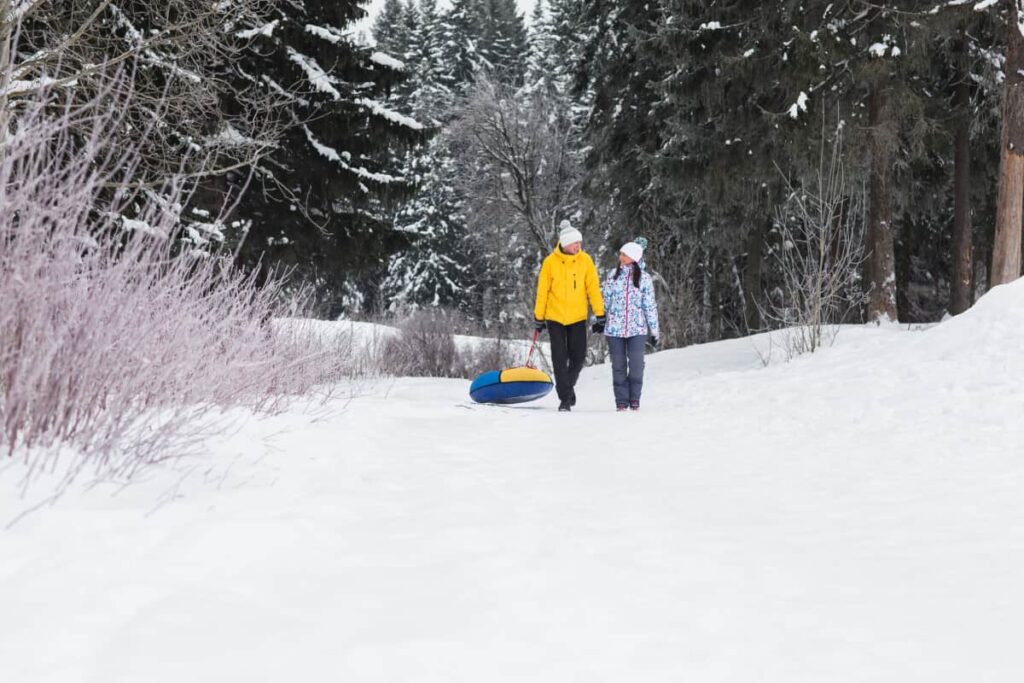
It’s also a good idea to make sure your path is well marked if the slopes aren’t right next to or even part of your camp. Getting lost can become very easy in the snow, especially if more snowstorms are brewing. Fun in the snow is great, but staying safe is the number one priority.
Finally, make sure you understand the area you’re using for sledding. Injuries can occur if the sled manages to hit anything in the path. For more safety tips that can keep you and your family safe while sledding, check out this safety sheet from the Nationwide Children’s Hospital.
Do Some Winter Whittling
If you have a knife handy, you might as well try your hand at whittling some wood. The activity can be a fun, calming one to engage in when you’re just hanging around the campfire. You can also work based on your experience level.
Some people may try to make something as simple as a spoon, while others might try to get a little more complex. One of the biggest benefits of camping is being able to get away from daily life, set your technology aside and find peace in what nature has to offer. Whittling is a great way to make use of nature and engage your creativity.
A first aid kit is important to have on any camping trip, but especially if you plan on engaging in activities that require the use of sharp objects. If you’re planning on doing any whittling while you’re camping, make sure you have all the first aid you need to keep yourself safe and take care of any wounds.
The Boy Scouts of America’s Manual has a lot to say about knife safety and it’s a great resource and reminder of simple tips to keep you and those around you safe. If you don’t have the manual here are some tips on this blog that go over some safety tips.
Maintain Your Fire
Camping in warmer weather usually means you only really need a fire in the evening. However, winter camping often requires a campfire going pretty much constantly. For those who don’t come with piles of firewood on hand, this can be a very time-consuming activity.
Additionally, it’s an activity you can use for teaching children how to thrive in nature. From learning how to start a fire to gathering and chopping wood, they can really learn a lot just from keeping the fire going. You can also enjoy the sights together as you’re out searching for firewood.
This can also be a good time to work on finding the most efficient campfire setup. There are a variety of different ways to design a campfire, and some work in certain situations better than others. Naturally, you’ll want something long-lasting that creates a whole lot of heat. Working with friends or family members, you can figure out the perfect campfire configuration for winter.
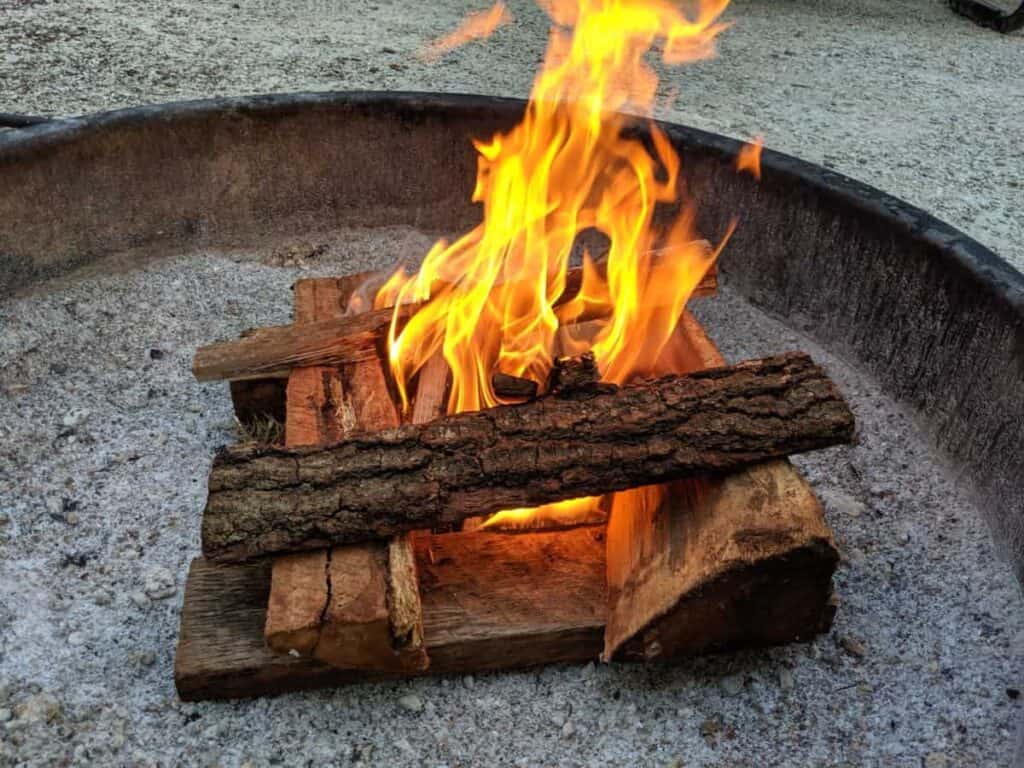
If you would like some tips about campfires in the context of cooking, check out our post about different campfire configurations, here. You’ll learn a bit more on how different fire configurations burn differently.
Cook Complex Meals
Some of life’s simple activities can take much longer than normal when you’re camping. This is especially true if you’re camping in the snow. It might seem like a hassle, but if you learn to enjoy the slowdown then you can find that cooking while winter camping can be a lot of fun.
Putting together meals that require a little more work can be a great opportunity to bring the family together. You can use this time for teaching younger family members to cook, or just enjoy the simplicity of the act. It’s not often we get to slow down and take things one step at a time, so it’s worth cherishing.
One aspect worth keeping in mind is that the complexity of cooking is going to be exacerbated when you’re out in the snow. That means meals that are normally relatively simple in your kitchen might be harder and more time-consuming in winter. It’s a good idea to start very simple and work your way up to recipes that contain just the right level of complexity for winter camping.
One tool that is a favorite cooking method of while camping is to use a dutch oven. You can see some tips for cast iron camping in our total guide here.
Track Animals
Tracking animals can be a fun activity for the whole family. While animals might often be easier to find during other times of the year, finding them in winter can be more rewarding. It’s also easier to see their tracks in the snow and follow them.
This activity can make for a fun and educational experience. Together, you can learn about the different kinds of prints animals leave in the snow and find out what kinds of critters are living in the area around your campsite. It’s a fantastic way to get in touch with nature and bond with those around you.
Just be careful and keep your distance when dealing with wild animals. Many will run away if you get too close, but there’s always a chance some animals may try to defend themselves or their territory. Instead of getting into their space, consider bringing some binoculars so you can look at them from a safe distance.
Camping Off-Season Might Be Perfect Weather
While exploring might be more difficult in the snow, it’s a fantastic activity if you’re camping somewhere that is usually extremely hot. For example, camping in a desert can often be difficult due to the heat. That tends to mean exploring is tough unless you don’t mind getting sweaty and drinking water constantly to stay hydrated.
On the other hand, camping in a desert in winter can be a lot more accommodating. It’s easier to get around while staying at a comfortable temperature, and the lack of snow will allow you to get a good look at everything around you.
For example, Big Bend State and National parks in Texas see a surge of popularity during the colder months because it’s usually too hot to have any kind of fun during the summer.
Design Your Camp
If there’s plenty of snow around, you can spend some time moving the snow around to make your camp more enjoyable and comfortable. That might mean shoveling snow out of your camp and making a wall around you. Not only can it be an entertaining experience, but it can also act as a cheap wall to protect you from wind.
Additionally, you can make sculptures from the snow to enjoy around your camp. It’s a fun activity and it allows you to engage your creativity using nothing but the nature around you. Whether it’s snowmen or something more complicated, it can be a lot of fun to just play in the snow.
Remember that working in the snow is a full-body workout and you should drink lots of water.
Take Winter Photos
Not everyone gets to experience the same joys that winter can bring. Not every place receives snow. Whatever your environment is like in winter, you can really get the most out of it by taking some photos of whatever is around you.
To begin with, taking pictures can help you to find the beauty in everyday life. You can also use this time to get pictures of yourself as well as friends and family members who may be with you. With those pictures in hand, you’ll be able to enjoy the memories you made together.
Try Your Hand At Art Or a Craft
If you enjoy spending your free time creating, camping is a great time to clear your mind and engage in creative activities that are fun and calming. You can read, draw, write, or even paint if your materials (and your hands) can handle the temperature.
The peace of camping combined with gentle, productive activities can be really good for your brain. Taking part in a creative hobby can help to get your mind away from the tedious aspects of everyday life. Additionally, the fresh perspective that comes from a new environment can provide some great inspiration.
Try Out Some New Gear
There may be some kinds of gear that you need while winter camping that you wouldn’t normally use. It can be quite exciting to have the chance to try this gear out and see how it works in a real camping situation.
Some winter-specific gear you might need includes the following:
- A four-season tent. (Curious what the difference is? Find out in our post, here)
- A sleeping bag designed for below-freezing temperatures.
- A small, portable stove for cooking or creating drinkable water.
- Sleds and tubes for fun in the snow.
- Snowshoes and hiking poles.
- Warm base layers and outer layers for staying warm.
- Hats, gloves, socks, and goggles.
- Specialized tools for winter restroom use.
That said, definitely make sure to give whatever new gear you have a practice run while you’re at home or at least close to it. That way, you can get a sense of how it will work when you’re actually out in the wilderness. Otherwise, you could end up in an unsafe situation too far away from home.
Your gear can make or break a trip, especially if you’re camping in the winter. It’s even more important at this time of year to make sure you have adequate shelter and protective clothing. For a more in-depth look into what kinds of gear you’ll need to make a winter camping trip more comfortable and fun, check out our article on the topic here.

